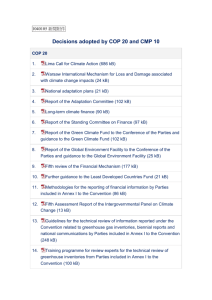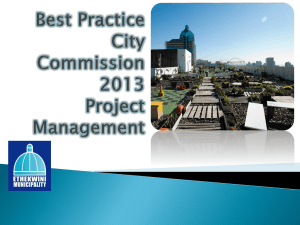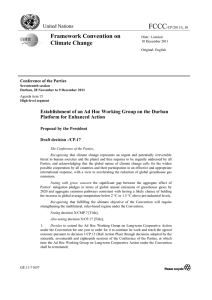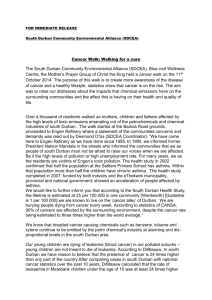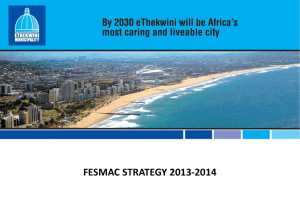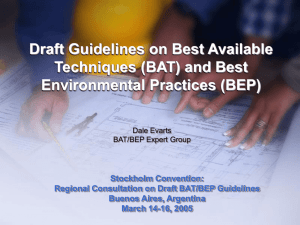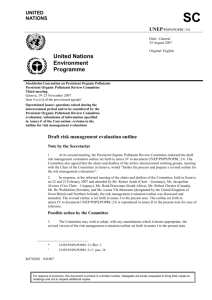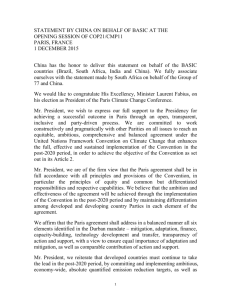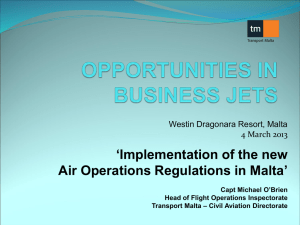Korppoo Slides
advertisement
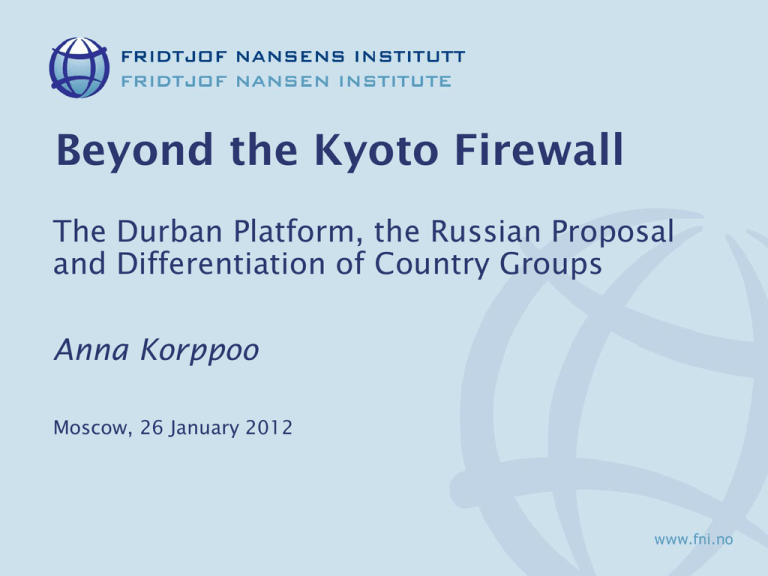
Beyond the Kyoto Firewall The Durban Platform, the Russian Proposal and Differentiation of Country Groups Anna Korppoo Moscow, 26 January 2012 Firewall: Common but differentiated responsibilities Only Annex I (developed) countries required to adopt legally binding quantifiable mitigation / stabilization targets – Convention, KP, BAP G77+China defend right to develop / equity fiercely: KP2 seen as a safeguard – developed countries must take lead since they are already wealthy + caused the problem Annex I want to change: world has changed, cannot reduce emissions enough to stop climate change without emerging economies Graduation towards Annex I group discussed in 2000s, relevant again after Durban Durban Platform – road to graduation? process / roadmap towards a new regime: ‘a protocol, another legal instrument or an agreed outcome with legal force under the Convention applicable to all Parties’ new Ad Hoc Working Group on the Durban Platform (AWG-DP): finalize work by 2015 – into force 2020 CBDR not explicitly mentioned – firewall down? Open questions: – Political will? Coalition of the unwilling in Durban? – CBDR in Convention – AWG-DP under Convention – Yet another roadmap… – Agenda of AWG-DP to be decided in 2012 The Russian Proposal Proposal to amend the Convention (article 4, paragraph 2 f): – Economic and technological development since 1992: amendments to Annexes I and II should be reviewed on periodic basis until the objective of the Convention (to prevent dangerous atmospheric interference) has been achieved Negotiation group in Durban: – G77 and China opposed in principle and claimed to need more time – Annex I Parties supported – Good discussion opening by Russia - continues Trends since early 1990s…? Emissions per capita 1990-2008: Annex I vs. non-Annex I 24 2008 44,6 18,6 Saudi Arabia 12,6 15,5 Kazakhstan 19,1 13 Russia 19,8 11,5 Korea 7,2 10,9 Japan 9,6 9,3 10,2 9,2 9,5 9 11,3 8 9,5 18,2 7,1 6,9 China 3,2 5,4 Mexico 5,1 4,1 Brazil 4,6 2,1 India 1,3 1,3 Qatar US Singapore Israel EU (27) South Africa Ukraine Source: IMF database 1990 37,8 Source: WRI CAIT database What graduation? Annex II Annex I NICs Binding absolute reduction target, no financing obligations Binding absolute reduction target, financing obligations RIDCs Other DCs Absolute limitation targets conditional to financing Absolute reduction or limitation targets, some financing Source: Various publications, especially Winkler et al. (2006) LDCs No quantified commitments, optional financed NAMAs No quantified commitments, obligatory cofunded NAMAs Indicators Who should mitigate and how much? – Rather scientific comparison than political negotiation as a basis of burden-sharing Criteria: responsibility, capability and potential to mitigate? – Cumulative emissions (historical responsibility) – GDP PPP or HDI – CO2/GDP – various others Also suggested: OECD membership, carbon intense exports, ecosystem services Discussion What are the Russian ideas on burden-sharing / graduation? Which indicators? Why? Are current structures applicable: – registered NAMAs? – Non-binding pledges under the Copenhagen agreement? How feasible is it politically that AWG-DP will establish a system with meaningful participation by all key players – graduation part of this? Thank you! Contact: anna.korppoo@fni.no

